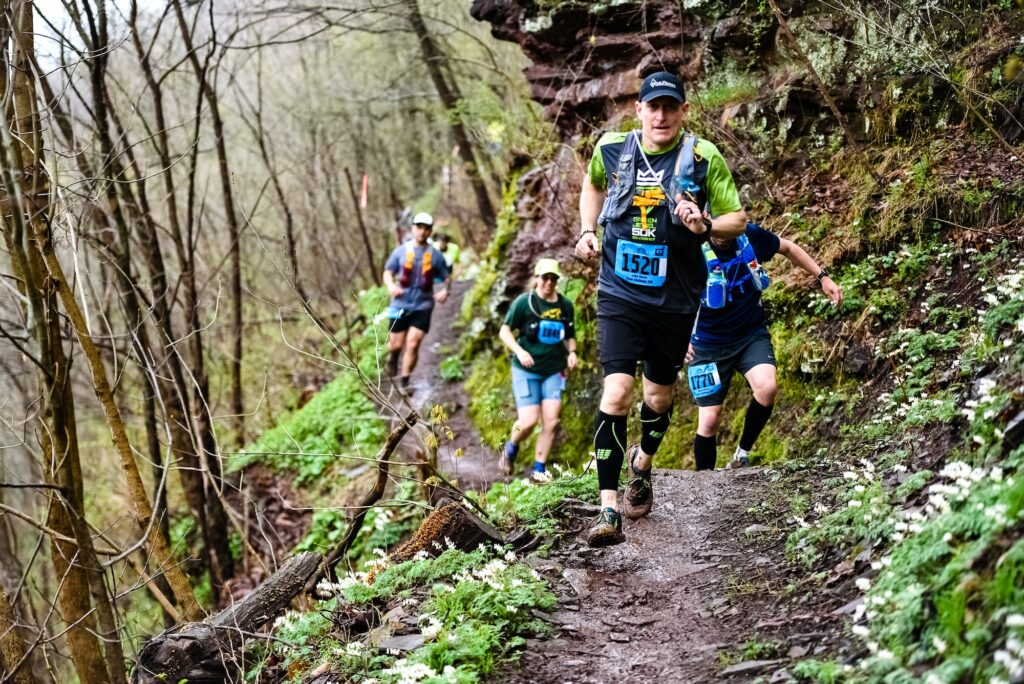Want to get dirty and embrace the challenges of the wilderness? Let trail running legend Thumbie Remigio send you off with this adventure starter pack
Photos by Jack Lemon, Hendrik Morkel, and Luke Baum/Unsplash
Know your basic gear
Trail running shoes – These shoes provide substantial traction, cushioning, and protection compared with normal running shoes.
Hydration pack/belt – It is important to always have some sort of hydration system (like a bag, bottles, or belt) with you. For longer runs, you may also want to pack in food, energy supplements, a jacket, money, headlamp, and mobile phone.
Clothing – Dri-fit, lightweight fitted shirt and shorts or pants, depending on the weather condition. A cap and arm sleeves can add protection from the sun and tall grasses.

Master your basic trail running techniques
Get used to running on flat trails first until you gain enough control with your footing to tackle uneven terrain.
Hill running
1. Aim to get over a hill efficiently with the least amount of effort while keeping a strong and steady pace. You can do this by shortening your strides and using small and efficient steps to maintain movement up a steep climb. Climbing with small, rapid steps allows you to change directions quickly and select the best route possible.
2. Walk if you must. If you cannot maintain a consistent running pace and just consume too much energy, dial back into a power hike. This can be more efficient, and sometimes even faster, especially on very steep hills.
Get used to running on flat trails first until you gain enough control with your footing to tackle uneven terrain
Downhill running
1. The natural pull of gravity causes your body to run fast and for most inexperienced runners, this may lead to an accident or injury. The basic principle of downhill running is to keep your strides short, control your speed, and use your arms for balance.
2. The secret to a fast and efficient downhill run is to look ahead, anticipate, and establish the “line” that you will follow. This way you can plan your next move in case you need to overcome obstacles or change your line without having to stop.
Train for it, and train hard
Distance training
If you’re planning to run a race of a certain length, include training for that particular distance in your program. Incorporating long runs in your training helps you adjust physiologically and psychologically to the added physical and mental stress and fatigue that result from running beyond your usual distance.
Since trail running is slower than road running, do not expect your time in a 10K road run to be the same as your time in a 10K trail run
Train for time
Since trail running is slower than road running, do not expect your time in a 10K road run to be the same as your time in a 10K trail run. Use time on your feet and effort as your basis for training rather than distance, since gradient, altitude, and climate are factors that have to be considered.
Speed training
To run fast, you need to train fast. To do this, establish a consistent training base. Running at a faster than normal pace helps improve both cardiovascular fitness and biomechanical efficiency and, more importantly, develops a deep tolerance for pain and suffering.
To run fast, you need to train fast. To do this, establish a consistent training base
Run to the gym, too
Resistance training should also be incorporated at least twice a week, working different muscle groups for each session. This will complement your running strength and at the same time help avoid injuries, increase resting metabolism, align joints, balance muscular strength, and build tendon and ligament strength.
Don’t forget your R&R
Normally, micro muscle tears happen as a result of training, which is why it is important to allow the body to recover, rebuild, and avoid overuse injuries. With proper recovery, the body will then be able to optimize your next training session.